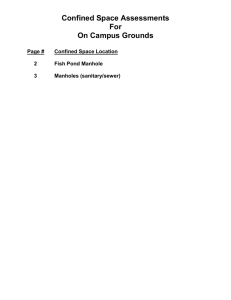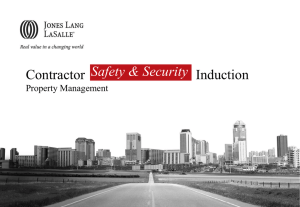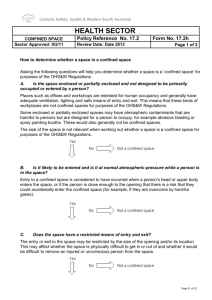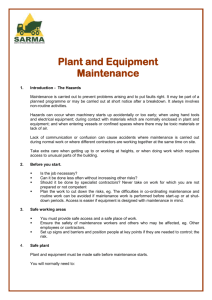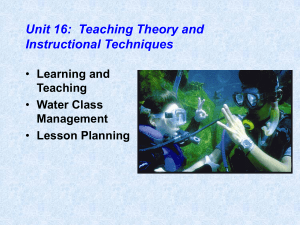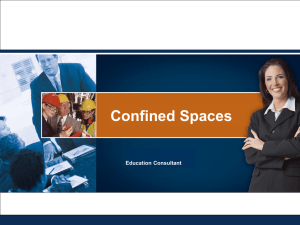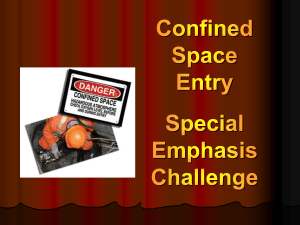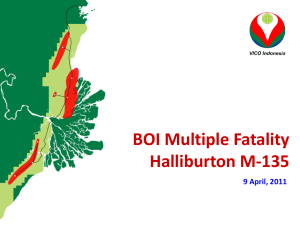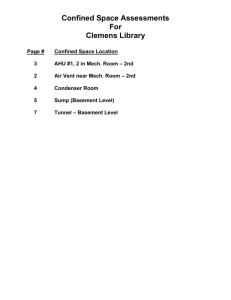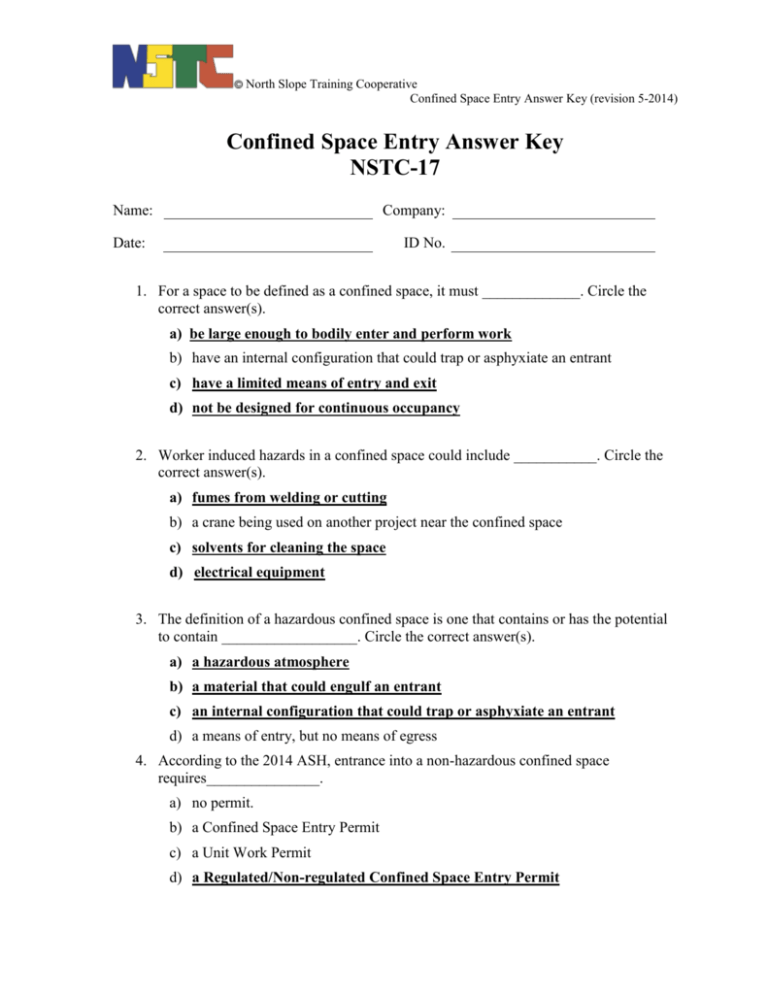
North Slope Training Cooperative
Confined Space Entry Answer Key (revision 5-2014)
Confined Space Entry Answer Key
NSTC-17
Name:
Company:
Date:
ID No.
1. For a space to be defined as a confined space, it must _____________. Circle the
correct answer(s).
a) be large enough to bodily enter and perform work
b) have an internal configuration that could trap or asphyxiate an entrant
c) have a limited means of entry and exit
d) not be designed for continuous occupancy
2. Worker induced hazards in a confined space could include ___________. Circle the
correct answer(s).
a) fumes from welding or cutting
b) a crane being used on another project near the confined space
c) solvents for cleaning the space
d) electrical equipment
3. The definition of a hazardous confined space is one that contains or has the potential
to contain __________________. Circle the correct answer(s).
a) a hazardous atmosphere
b) a material that could engulf an entrant
c) an internal configuration that could trap or asphyxiate an entrant
d) a means of entry, but no means of egress
4. According to the 2014 ASH, entrance into a non-hazardous confined space
requires_______________.
a) no permit.
b) a Confined Space Entry Permit
c) a Unit Work Permit
d) a Regulated/Non-regulated Confined Space Entry Permit
Confined Space Entry Answer Key
5. A hazardous atmosphere is one which contains a flammable gas, vapor or mist in
concentrations equal to or greater than _______ of the LEL.
a) 50%
b) 40%
c) 25%
d) 10%
6. A hazardous atmosphere has an oxygen concentration ____________.
a) Below 19.5%
b) Above 23.5%
c) Below 19.5% or above 23.5%
d) Between 20% and 23%
7. A hazardous atmosphere is defined as one which contains a concentration of a
hazardous substance in excess of the _________.
a) LEL
b) PEL
c) STEL
d) TWA
8. Atmospheric testing must be completed from outside the space _______. Circle the
correct answer(s).
a) prior to opening a hatch.
b) prior to entry.
c) continuously during entry.
d) prior to re-entry.
9. Atmospheric testing is usually performed by the _________________.
a) Entry Supervisor
b) Company or Safety Personnel
c) Attendant
d) Authorized Entrant
© 2008 APICC/NSTC - All rights reserved
page 2 of 5
Confined Space Entry Answer Key
10. In order to completely remove a hatch or man-way into a confined space, the
concentration of flammable vapors must be less than ________of the LEL.
a) 50%
b) 40%
c) 25%
d) 10%
11. A confined space entry permit must be renewed at least every ______________.
a) 8 hours
b) 12 hours
c) week
d) shift
12. Atmospheric testing must be done in what order?
a) toxic contaminants, oxygen concentration, flammability
b) oxygen concentration, flammability, toxic contaminants.
c) flammability, oxygen concentration, humidity
d) humidity, oxygen concentration, flammability
13. The ______________is responsible for removing unauthorized individuals who enter
or attempt to enter the confined space.
a) Entry Supervisor
b) Operations Supervisor
c) Maintenance Supervisor
d) Unit Operator
14. It is the responsibility of the ________________ to continuously maintain an accurate log
of all persons in the confined space.
a) Unit Operator
b) Entry Supervisor
c) Authorized Entrant
d) Attendant
© 2008 APICC/NSTC - All rights reserved
page 3 of 5
Confined Space Entry Answer Key
15. The _________________is responsible for properly utilizing the equipment provided
for testing or monitoring, ventilation, communication, lighting, barricading, access,
and personal protective equipment.
a) Unit Operator
b) Entry Supervisor
c) Authorized Entrant
d) Attendant
16. Energy isolation methods NOT approved for a confined space are _____________.
Circle the correct answer(s).
a) Disconnect/misalign (pipes)
b) Double block and bleed (valves/pipes)
c) Lockout tagout (electrical equipment)
d) Single valve isolation
17. The primary duty of the Attendant is to _________________.
a) warn unauthorized persons away from the confined space and advise them to
exit immediately.
b) rescue authorized entrants if they become trapped or overcome by a hazardous
atmosphere.
c) read and understand the confined space permit and post copies of the permits
related to confined space at the main entry point.
d) remain outside the confined space at all times to monitor and protect the
authorized entrants.
18. Removing oxygen from a confined space by using a non-reactive gas such as
nitrogen, carbon dioxide, or argon is called ______________________.
a) purging
b) positive pressure ventilation
c) inerting
d) negative pressure ventilation
© 2008 APICC/NSTC - All rights reserved
page 4 of 5
Confined Space Entry Answer Key
19. The person responsible for calling rescue services if persons inside the confined space
need assistance is the ________________.
a) Entry Supervisor
b) Authorized Entrant
c) Attendant
d) Unit Operator
20. Forcing air into a confined space to maintain a continuous flow of fresh air and a safe
atmospheric level is called _____________.
a) purging
b) positive pressure ventilation
c) inerting
d) negative pressure ventilation
© 2008 APICC/NSTC - All rights reserved
page 5 of 5

